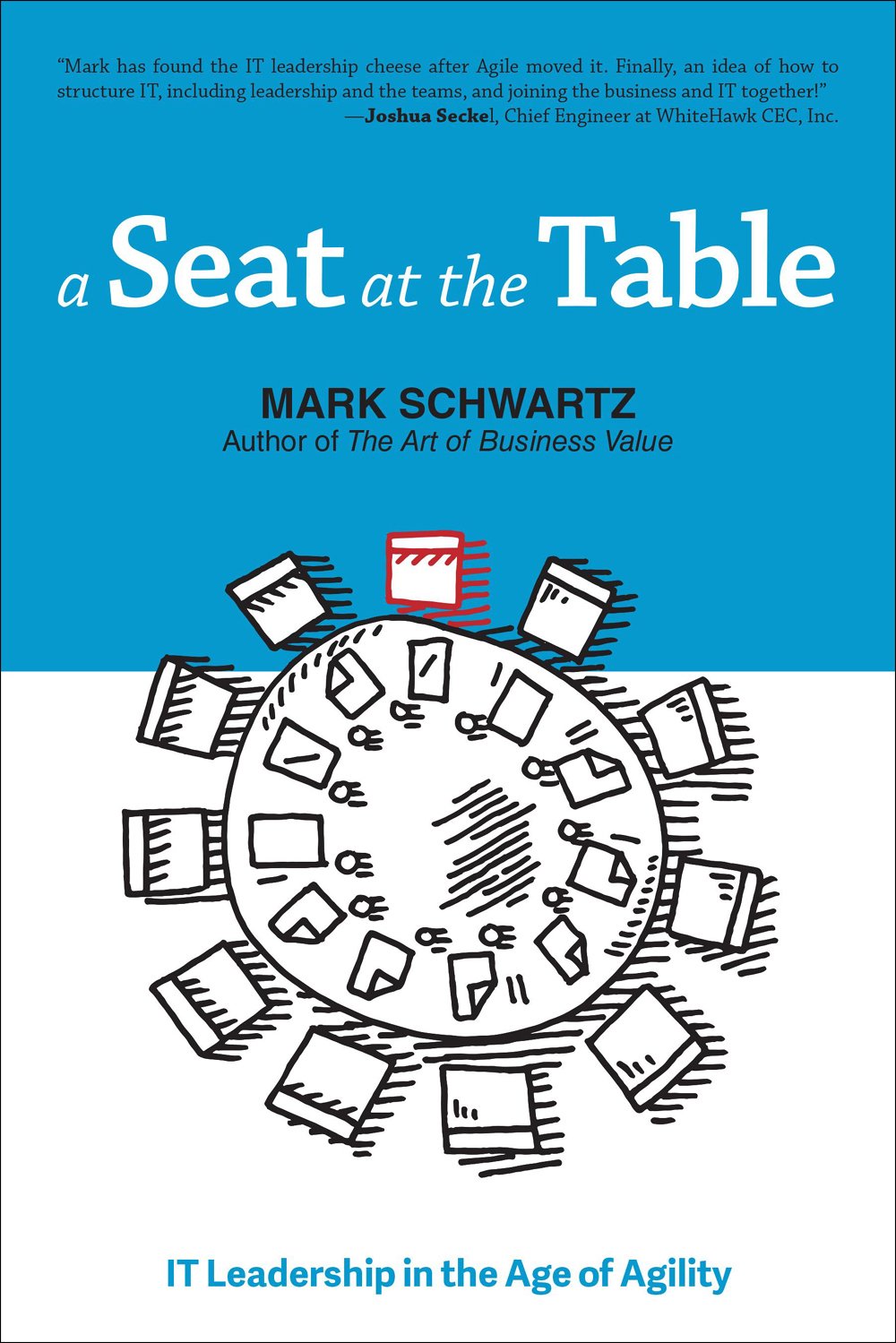Leave us a message
We usually respond within a few hours. You can also make an appointment with us for a specific date by clicking on the link to our calendar below.


In this post, I continue my review of Mark Schwartz's book 'A seat at the table' which has been a source of much inspiration for me recently.

The book in an online bookstore
Here is a link to the first part of the review:
The role of the CIO in the Agile era - part 1
In that post I described the development of the CIO position over the last 30 years. What emerges from the story is a picture of a person involved in a perpetual conflict in a company. And it is a conflict on several fronts. The position of an "old-style" CIO appears to be a buffer role - between the management board and the IT department, between your own team and other managers and their team members. Finally, a buffer within one's own team.
Are agile project management methodologies an ally of the CIO in the new "agile" times? Or will they rather cause the disappearance of the CIO function in the enterprise in favour of the Chief Digital Officer - a person who is more of a visionary in the world of digital transformation and much less (if at all) an IT manager?
"A seat at the table" presents a very clear and unambiguous position: the agile revolution is helping to better understand the CIO and the area in which he and the department he manages, add value to the enterprise.
The value that IT creates is difficult to capture. It is not always, as described in the days before the agile revolution, increasing sales or making other employees' jobs easier.
In many industries, it is becoming increasingly difficult to determine which issues, seemingly belonging to the area of technology, are merely supporting the business or rather already became the core business of the enterprise. Banking is a perfect example, but this phenomenon is becoming more and more visible in industries such as automotive or logistics.
Is the constantly progressing development of a transactional system in an investment bank an IT issue or a business issue?
Is the implementation of AI solutions in a retail bank, explaining to a bank customer why their credit rating looks the way it does, an IT solution or a milestone in customer relationship management?
Are machine learning solutions that optimise truck routes also "just technology” or the co-management of one of the company's key areas?
Mark Schwartz makes a strong case for the fact that IT management is the management of large risks, which are not known, and certainly not fully known at the time of decision-making.
I would describe IT management as managing gigantic volatility. This volatility means that, in order to manage risk well, we should learn to take IT decisions at the latest possible stage.
Only then we are able to correctly capture the value that we as IT create for the company. We show the direction in the area of solutions, examples of which I gave above, solutions that are technological and at the same time key, strategic solutions for the business.
These solutions may contribute to an increase in sales, reduce costs, facilitate the work of employees. But often their implementation or lack thereof decides about the "to be or not to be" of a company. Simply speaking, it allows the company to stay on the market. This is also a value and a key one. I associate it with the role of a guide who leads the participants of an expedition through the mountains.
The agile approach allows us to capture where, in the shortest term, we and our department are 'creating value'. This in turn allows the company to see our and the team's role from a proper, appreciative perspective.
As I wrote earlier, in the early days the terms CTO and CIO were often interchangeable.
Today, we often associate the CTO with the role of the high man in charge of software development and the CIO with the role of "the company's highest master of infrastructure".
As Schwartz correctly states, today, in the era of the cloud revolution and IaaC (Infrastructure as a Code) - software has displaced hardware from the area of key IT interest in a company. At the same time, the adoption of agile solutions has made it much more profitable to create dedicated software than to buy ready-made external solutions, paying additionally for their customisation (here it seems to me, after all, a controversial thesis of the book). However, I like the definition of the matter in the following way - CTO is not necessarily a "master of software", but a person oriented on internal management of IT resources. People responsible for domain areas ("Head of") should report to this person. A CIO is a person oriented on the external development of the company as a whole. He is a co-creator of its strategy sensu largo, not limited only to the technological area. Is it possible today to separate a strictly technological area?
Will the concept of the Chief Digital Officer survive? In my opinion, if we put such a position in a company (especially in a large enterprise) on a par with the CIO, we create an "organisational monster". Either we create two competing departments, where it's only a matter of time before they start cannibalising each other, or we undermine the status of "guide through the mountains" in favour of "visionary of digitisation". The situation looks different to me when we put the visionary in the CIO team as "Chief Innovation Officer"- that makes sense.
In general, I am far from getting carried away with the "brave new world" in most areas of life. Yet consistent development in all areas of life is progressing and the "agile" approach is now the permanent one that will stay with us. I have encountered voices from experienced CIOs/CTOs that the "agile" approach is overrated, that the "agile" approach promised more than it actually delivers. I would very much appreciate your comments in this area.
Overall, I certainly agree with the main thesis of the book - the huge variability of the problems that IT faces means that agile methodologies allow us to describe the value that IT creates for the enterprise here and now. And that's why the role of the CIO is not only not going to disappear but will become increasingly important.
A Seat at the Table: IT Leadership in the Age of Agility
Mark Schwartz
IT Revolution Press; 1st edition (October 10, 2017)

We usually respond within a few hours. You can also make an appointment with us for a specific date by clicking on the link to our calendar below.